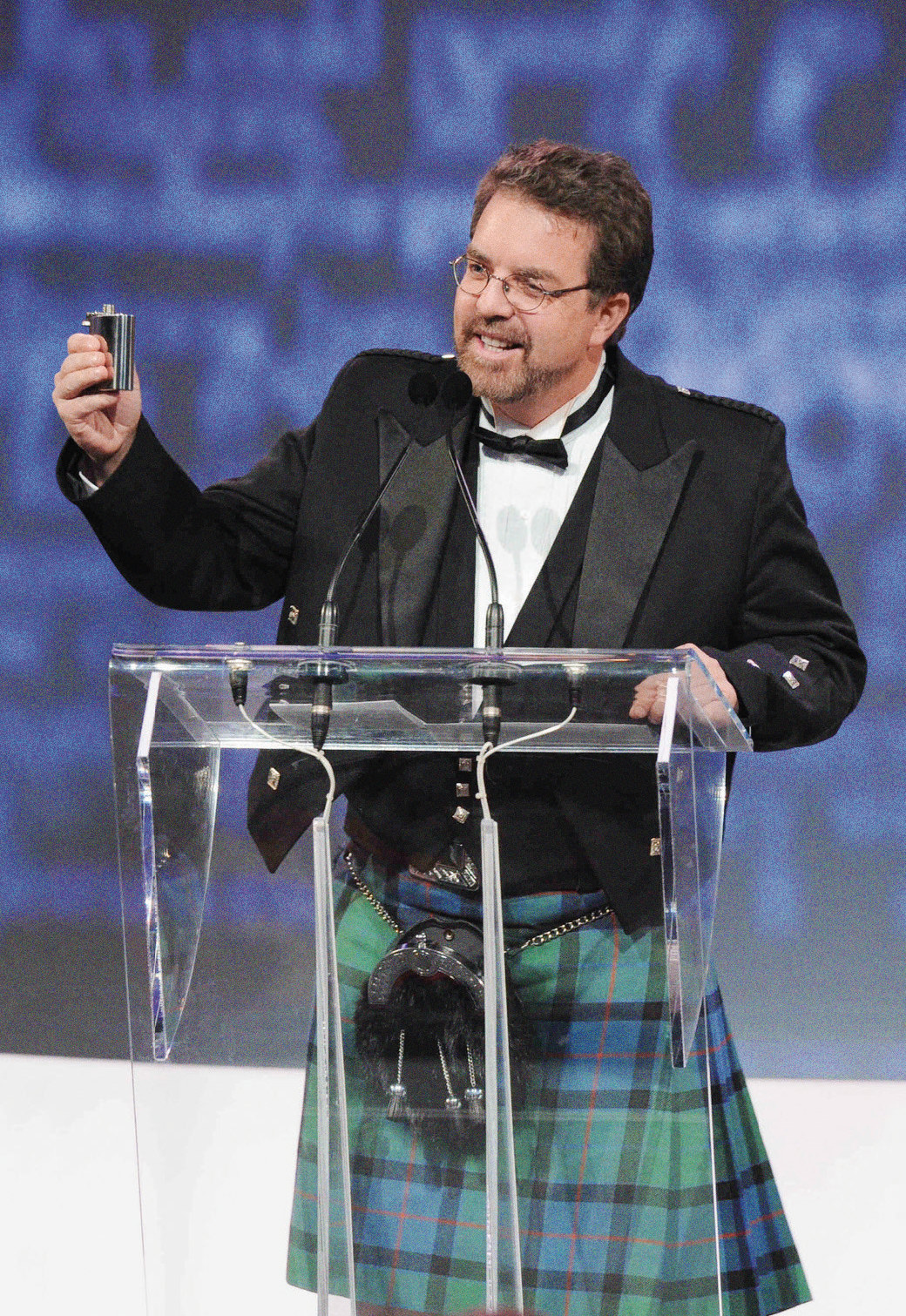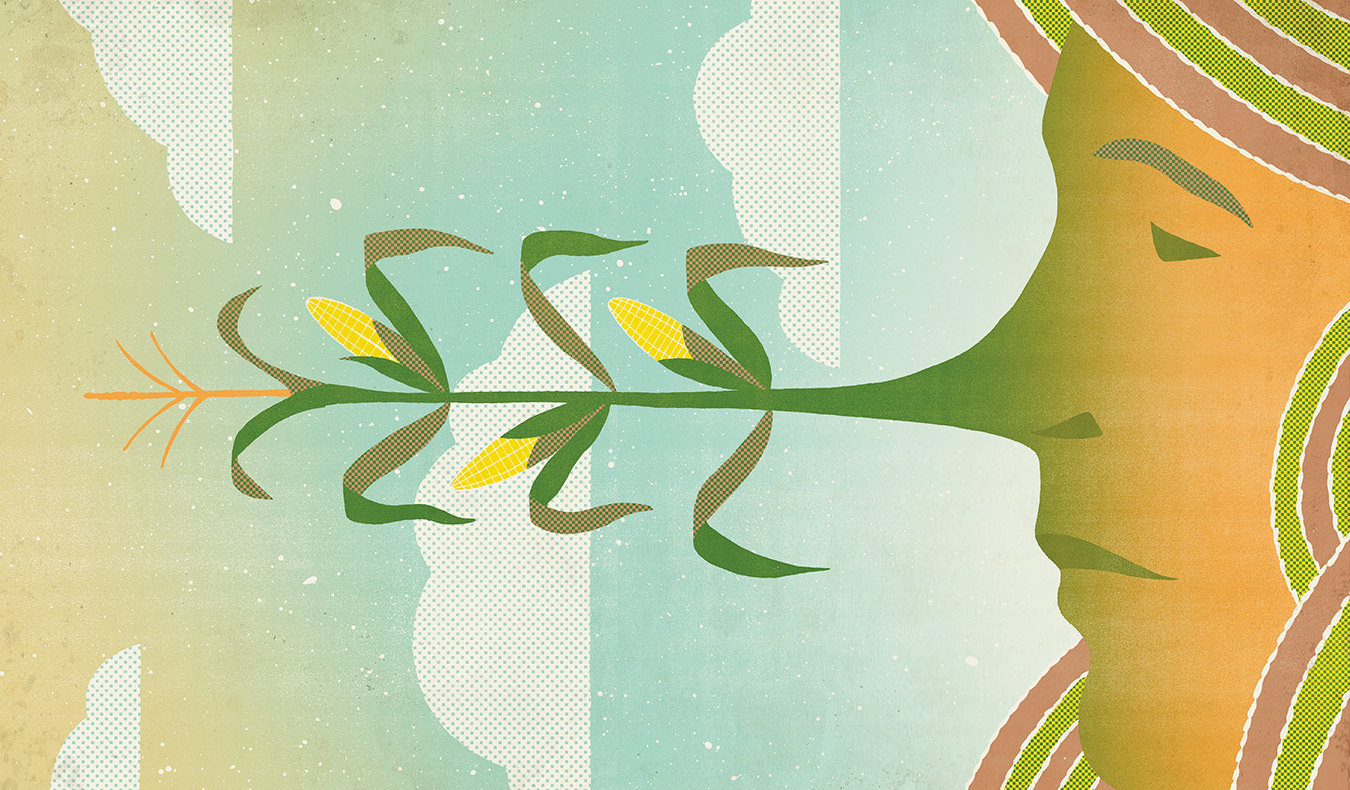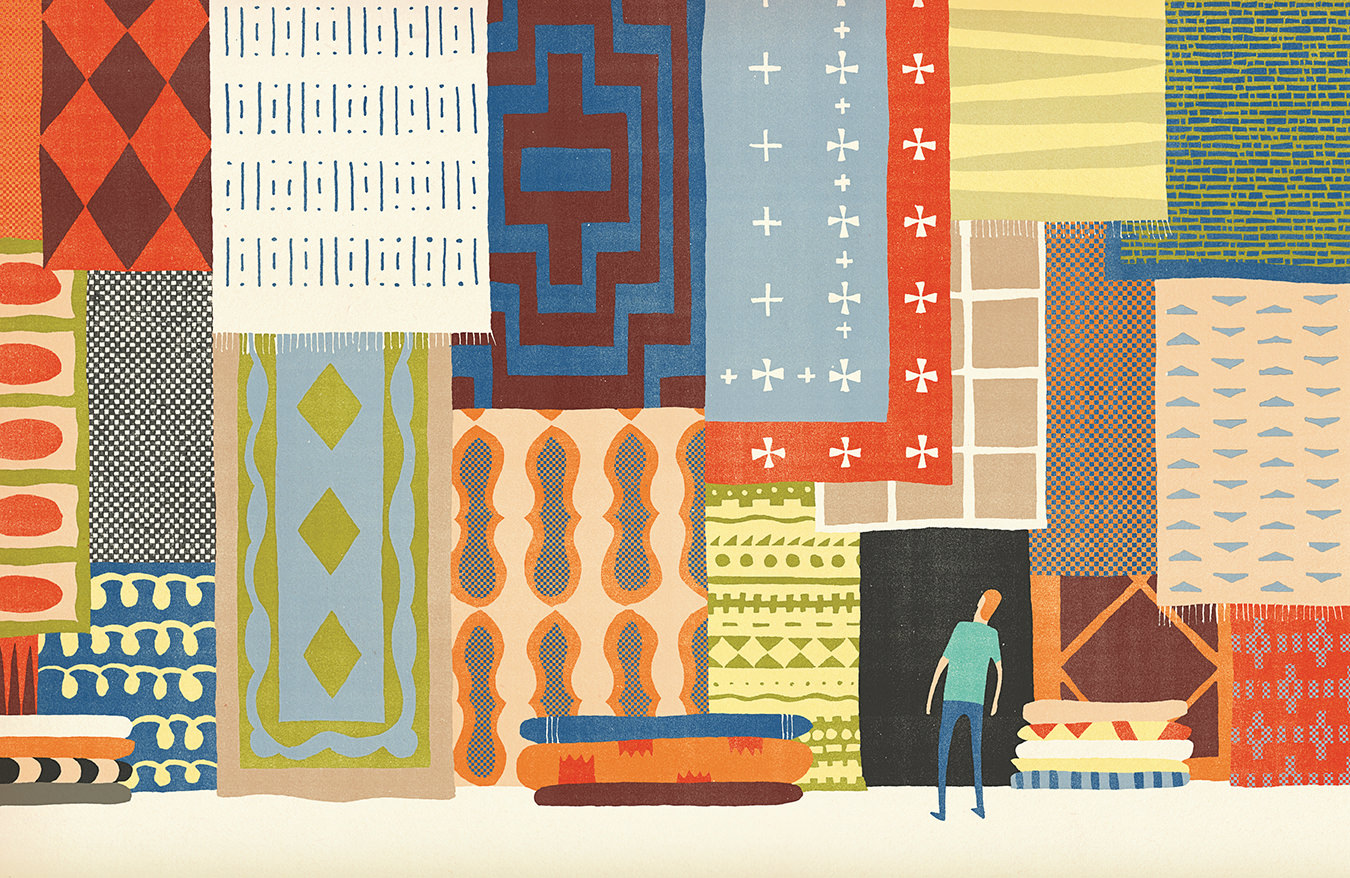In Other Words
Reading, writing, and publishing in the age of the e-book.

“Run, run. Run, Dick, run. Run and see.” From such humble beginnings many of us were introduced to the wonders of the written word. By studiously following the adventures of the sprightly Dick and his spunky sister Jane, we were taught not only the building blocks of grammar, but the basics of plot, character, and point-of-view.
It’s been more than a generation since Fun with Dick and Jane and its myriad of sequels were relegated to the second-hand bin, replaced by primers less repetitive in their vocabulary and more inclusive in their cast. During that time, Dick and Jane have crossed over from the literary graveyard and found a second life as collector’s items. These days, first editions of their reader fetch close to $200—a price that speaks as much to the value of Eisenhower-era kitsch as it does to the value of elementary-school memories.
But that, too, is a story. Beyond their lessons on nouns and verbs, Dick and Jane have something to teach us about the fate of the book in the information age. With the birth of e-readers such as the Kindle, Nook, and Kobo, along with tablets such as the iPad and its Android-powered knockoffs, the printed word is quickly becoming obsolete. Right now, the fact that you’re probably making your way through this sentence by moving your eyes across a sheet of high-gloss paper stained with ink seems perfectly normal. In a few years, it will likely seem as quaint and as antiquated as catching up with Dick and Jane.
Not that you’d know that by looking at an e-reader—or by taking one apart. Truth be told, the technology itself is about as back-to-basics as Silicon Valley gets: a liquid-crystal display (an idea popularized in the 1990s, but that existed for decades prior) coupled with a modest flash memory chip and a rechargeable battery. Some versions add a touchscreen interface, others a physical keyboard. All in all, nothing worthy of the word revolution.
Spend a little time with an e-reader, however, and you see how even simple technology can lead to profound change. By offering the possibility of a cheap, easy way for readers to access and store every word ever put to paper, e-readers have forever changed the way the world creates, distributes, and consumes art and ideas. Along the way, they’re giving enormous economic and creative power to authors; they’re challenging the canon; they’re shifting reading and writing from a solitary pursuit to a communal one; and they’re giving birth to new forms of writing—forms that may one day come to dominate how we tell a story, and what that story tells about us.
Among publishers and booksellers, the e-reader is surely the cause of a good deal of lost sleep. Since Amazon’s introduction of the Kindle back in 2007, traditional publishing houses and bricks-and-mortar retailers have struggled to adapt to threats to their way of business. When authors can publish their own works for free, and readers can connect 24/7 with big distributors such as Amazon, Apple, Chapters Indigo, and others, what need is there for printing presses or bookshelves?
It’s a problem they’ll need to solve soon. Last year, e-books made up some 22.6 per cent of U.S. book sales—up from a mere 1.18 per cent the year after Amazon started selling Kindle. (Last year Canadian e-book sales were calculated at about 16 per cent.) Each of those sales represents a massive loss of profit. And what profit there is has been consolidated into fewer hands than ever before.
If anyone has benefitted from the rise of e-books, it’s been the people who create them in the first place. These days, writers don’t need to take out a second mortgage or sell the family silver to self-publish. Nor do they need to hire an agent, a publisher, an editor, a sales rep, a proofreader, a book designer, a marketing consultant, or anyone else. All it really takes is time and something interesting to say.
And a little software, of course. Amazon offers authors its own e-book publishing program; using it is about as difficult as opening a tin can. For do-it-yourselfers, there is Mobipocket or Calibre; for those with more money than time, there is a growing cottage industry that can convert your text file into an e-book for a couple hundred dollars. Create your own cover or get a pro to do it—call it another 50 or 100 bucks—and there you go: you’re in the e-books business.
Either way, you stand to make a bundle: authors who publish exclusively to the Kindle platform and price their books within a certain range (currently between $2.99 and $9.99) get to keep 70 per cent of their sales. Apple and other distributors offer similar sweetheart deals. It’s what your MBA prof would call a win-win: middleman gone, readers get cheaper books, and authors get more profit. Take down a portrait of the artist as a young man; hang up a portrait of the artist as an entrepreneur.
It’s difficult to overstate the freedom such an arrangement affords. Except for those graced with Oprah’s blessing, authors have always found money a distraction—a mean, grubby pursuit that keeps them from their art. Now that even the greenest of literary rookies stands to make a decent buck off their magnum opus, authors are free to pursue their muse wherever she takes them.
If anyone has benefitted from the rise of e-books, it’s been the people who create them in the first place. These days, writers don’t need to take out a second mortgage or sell the family silver to self-publish. All it really takes is time and something interesting to say.
Case in point: Wool, a dystopian sci-fi adventure set in a future Earth. Entirely self-published as serial-form e-books, Wool and its precursors and sequels are an industry success story. So far, the original title has sold more than 500,000 copies, earning author Hugh Howey well over $1-million. And to think, before he hit it big, Howey was a yacht captain, a roofer, and an audio-visual tech.
As stories go, Wool is a pretty good one. It’s short, but thought-provoking, in a spooky, “what if” kind of way. While its prose lacks the flair and panache of the stuff you’d read in an upper-level English class, it is by no means rudimentary. It’s a page-turner, but it’s one with brains.
In other words, it’s perfect for an e-reader. While its length might technically qualify it as a novella, Wool reads more like an episode of The Twilight Zone than the next Heart of Darkness. The narrative moves briskly. The setting is disturbing, the world view pessimistic. The dialogue serves more to build suspense and drive plot rather than build character. Perhaps most important, there are more questions than answers, leaving plenty of opportunity for sequels, prequels, and spin-offs.
And that’s the point. Literature and storytelling are different endeavours, and Howey makes no excuses for casting his lot with the latter. Wool isn’t exactly pulp fiction, but it shares many of its conventions. Even the way it was published owes a debt to the penny dreadfuls and dime novels of days gone by: serial publication, low price, and a massive marketing effort. Just the thing for a medium better suited to the commute home than the seminar room.
Wherever you place Wool on the spectrum of culture, it’s hard not to applaud Howey’s success. Call it courage, call it nerve, call it something more crude—it takes a lot of it to snub multiple offers by established publishing houses (some of them seven figures). But all’s well that ends well. By holding out, Howey was able to secure a print-only deal with Simon & Schuster and sell film rights to acclaimed director Ridley Scott, all the while cashing monthly cheques from e-book sales, for which he retained the rights.
To those slaving away on their novels in weekend workshops, both the form and method of Howey’s writing are something to emulate. Given such success, we can expect a multitude of similar titles in the years to come, of similar lengths, offered at similar prices, plumbing similar themes, published in a similar way. For with Wool, the e-book itself has become a genre: instead of In Search of Lost Time, we have The Lost World, A Wrinkle in Time, and Star Trek III: The Search for Spock. Or just as likely all three rolled into one.
For those of us steeped in the world of paper and ink—lit majors, librarians, students of philosophies both great and small—it’s hard not to feel a little doleful about it all. Genre fiction is all well and good, but where are the great books? The Giller- Man Booker- Pulitzer-winning novels? The groundbreaking, avant-garde experimentation? Is the best of the e-book still to come? Or is there something about the medium itself that makes it anathema to high art? If the e-reader is so revolutionary, why is the “feeling” of electronic reading (much less the results of electronic writing), often seem less of an evolution than its opposite?
Well, speed for one. If you’re scanning headlines, flipping through magazines, or quick-reading a stack of mysteries at the cottage, the e-reader is the ideal tool. Instead of sorting through endless reams, you quickly scan what you need, swipe it away when you’re done, and download more when you’re ready. But this same convenience runs contrary to the qualities needed for essays, character-driven novels, or “serious” literature. Such works reward immersion and patience, careful study and contemplation—qualities that, for some eyes, may be easier to pursue via paper than onscreen.
Of course, the distance between nostalgia and prejudice is a single step. It’s easy to express one’s criticism of e-books as a judgmental dichotomy: old vs. new, long vs. short, slow vs. fast, high vs. low, deep vs. shallow, literature vs. pulp. Such observations may be rooted in legitimate observations, but too often they degenerate into Luddism and fuddy-duddiness.
The age of print may well be drawing to a close, but reports of the death of the book have been greatly exaggerated. As e-readers become more common and e-books more popular, the utility of print will surely fade and diminish. Instead of a vehicle for thoughts and ideas, the book will become an object: a curiosity to collect, a token of education and class, a fetish to showcase on the cherry wood built-ins in the study.
Then again, maybe this misses the point. When it comes to writing, the only dichotomy that has ever mattered is quality: good vs. bad, worth reading vs. not. By fussing too much about the how of reading and writing, we miss the what and the why. Or to put it more “seriously”: in the beginning was the word, full of grace and truth. So will it be in the end—whether printed or digital.




